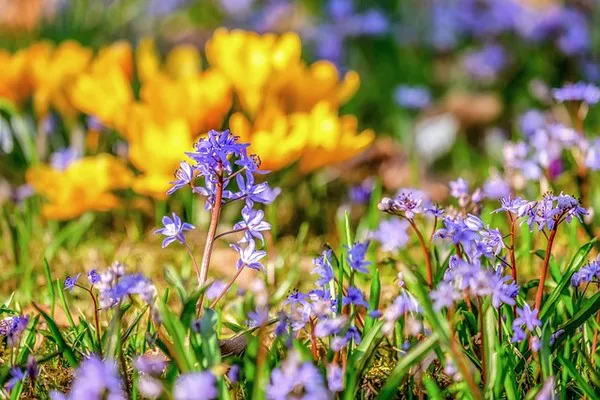Hyacinth flowers, with their vibrant colors and enchanting fragrance, add a touch of elegance to any garden or floral arrangement. Pressing hyacinth flowers is a wonderful way to preserve their beauty and extend their lifespan for artistic or decorative purposes. In this guide, we will explore the intricate process of pressing hyacinth flowers, from understanding their unique characteristics to mastering the techniques required for a successful preservation.
Introduction of a Hyacinth Flower
The hyacinth (Hyacinthus) is a genus of bulbous plants native to the eastern Mediterranean region and southwestern Asia. Renowned for their captivating scent and striking appearance, hyacinth flowers have been cultivated for centuries for both ornamental and symbolic purposes. These perennial plants belong to the family Asparagaceae and typically bloom in spring, gracing gardens, parks, and floral displays with their vibrant hues.
Hyacinth flowers are characterized by their dense clusters of small, bell-shaped blooms that form along a single, sturdy stem. Available in an array of colors, including shades of blue, purple, pink, white, and yellow, hyacinths offer versatility in floral arrangements and landscaping designs. The intoxicating fragrance emitted by these blossoms further enhances their allure, making them a favorite among gardeners and flower enthusiasts alike.
Methods of Pressing a Hyacinth Flower
Pressing hyacinth flowers is a delicate process that requires precision and patience to achieve optimal results. There are several methods for pressing flowers, each with its own advantages and considerations. The two primary techniques for pressing hyacinth flowers include traditional pressing and microwaving.
1. Traditional Pressing:
Traditional pressing involves carefully arranging hyacinth blooms between absorbent materials, such as blotting paper or parchment paper, and applying pressure to flatten them. This method is preferred for its simplicity and reliability, yielding beautifully preserved flowers suitable for various artistic endeavors.
2. Microwaving:
Microwaving offers a quicker alternative to traditional pressing, utilizing the heat generated by a microwave oven to remove moisture from the flowers. While this method accelerates the pressing process, it requires careful monitoring to prevent overheating and potential damage to the flowers.
A Step-by-Step Guide to Pressing a Hyacinth Flower
To achieve optimal results when pressing hyacinth flowers, follow these step-by-step instructions:
1. Harvesting:
Select healthy hyacinth blooms at their peak freshness, preferably in the morning when they are fully hydrated. Use sharp scissors or garden shears to cut the stems, leaving approximately 1-2 inches of length below the blossoms.
2. Preparation:
Gently remove any excess foliage or petals from the hyacinth stems to create a clean, streamlined appearance. Avoid handling the flowers excessively to prevent damage to their delicate blooms.
3. Arrangement:
Place the hyacinth flowers between layers of absorbent material, such as blotting paper or parchment paper, ensuring they are evenly spaced and not overlapping. Arrange the flowers in a single layer to facilitate even drying and pressing.
4. Pressing:
Place the arranged hyacinth flowers between the pages of a heavy book or within a flower press. Apply gentle pressure to the top of the stack to flatten the flowers evenly. Alternatively, if microwaving, place the flowers between layers of absorbent paper and microwave them in short intervals, checking frequently to avoid overheating.
5. Drying:
Allow the hyacinth flowers to dry completely under pressure for several weeks. Check periodically to ensure they are drying evenly and replace the absorbent material if necessary. Patience is key during this stage to achieve optimal results.
6. Finishing:
Once the hyacinth flowers are fully pressed and dried, carefully remove them from the absorbent material. Handle the preserved flowers with care to avoid damaging their delicate petals or stems.
Tips for Pressing a Hyacinth Flower
To enhance your success when pressing hyacinth flowers, consider the following tips:
1. Choose Fresh Blooms: Select hyacinth flowers that are in prime condition with vibrant colors and firm stems for the best results.
2. Use Quality Materials: Invest in high-quality absorbent paper or blotting paper to facilitate effective drying and pressing of the flowers.
3. Optimal Timing: Press hyacinth flowers shortly after harvesting to preserve their freshness and prevent wilting or discoloration.
4. Even Pressure: Apply gentle, even pressure when pressing the flowers to prevent distortion or damage to their delicate structures.
5. Monitor Carefully: When microwaving hyacinth flowers, monitor them closely to prevent overheating and ensure uniform drying.
6. Allow Sufficient Drying Time: Patience is essential when pressing hyacinth flowers, as adequate drying time is crucial to achieve optimal results.
Conclusion
By following these guidelines and techniques, you can successfully press hyacinth flowers to create stunning botanical specimens for artistic pursuits or decorative displays. Whether you choose traditional pressing or opt for the expedited method of microwaving, the key lies in meticulous attention to detail and a deep appreciation for the beauty of these exquisite blooms.


